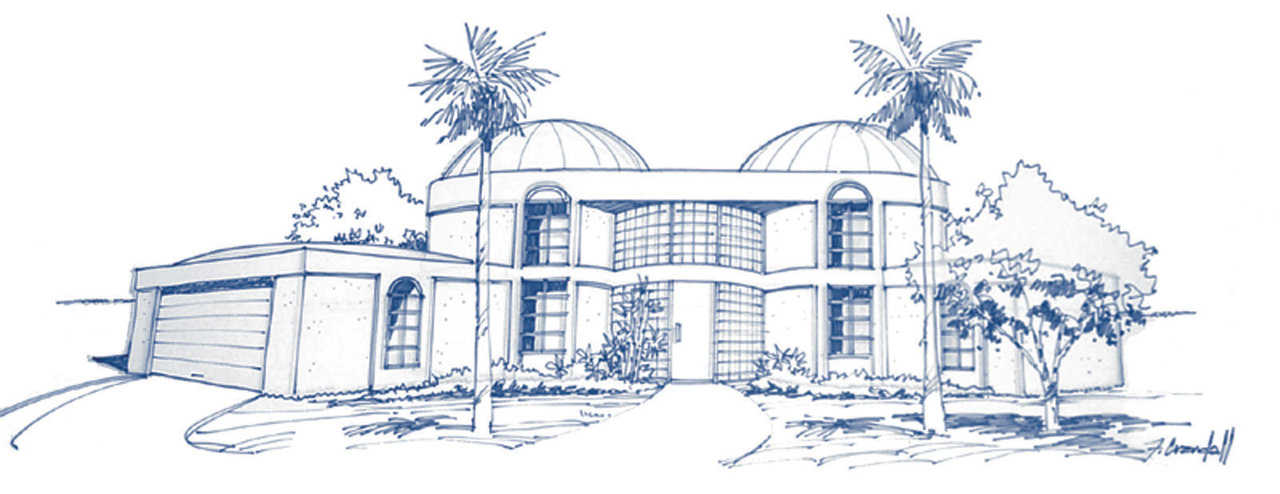
In our society, a home built with great detail increases the home’s value. This illustration by Rick Crandall demonstrates four basic design principles which can be applied to any size and type of dome: Shadow and Shape, Color and Texture, Step-Down Massing, Landscaping. (Rick Crandall)
Exterior Design 101
Four basic design principles can make any structure a beautiful piece of art.
When deciding to build a home, most people focus on interior floor plan, while the exterior often becomes an afterthought. Yet, it’s the home’s exterior that governs that all-important first impression your home creates.
A well-planned and landscaped exterior can erase the bareness surrounding a new home – especially a new dome-home.
Some things to consider when planning a Monolithic Dome:
What do you want the exterior to look like? What style do you like and really want? How much time can you allot to maintaining the exterior? How much money do you want to invest in plants or other exterior elements?
To help answer these questions, look through magazines for ideas, review Dome Living and articles on this website, and rely on your own imagination. Take a drive to take pictures of homes with design elements you like. Use available resources, such as rocks, to build small walls or fountains or whatever your mind can imagine and your budget will allow. Create various versions of your dome’s exterior to help you decide on a plan.
The Monolithic Dome has inspired dome builders, dome owners, architects and designers to discover ways of getting a traditional feel of home with a non-conventional, round structure. MDI Architect Rick Crandall says, “Any building, whether square or round, provides the greatest visual impact if four basic principles of design are applied to the exterior.”
Shadow and Shape:
Windows and doors provide depth to the dome. Shadows are created when windows and doors are cut into or added to the dome’s surface. These openings must be planned during the design stage. Primarily, there are three types of dome openings: an independent, whole opening; a notched opening; an arched opening. Each provides a different look and feel.
Color and Texture:
In his book Domes for Tomorrow, Rick Crandall says that Airform fabric when left exposed to the elements reacts like exposed roofing material over a 20-year period. Various methods of coating the Airform extend its life almost indefinitely if the Airform is not left exposed too long to begin with.
Any type of exterior coating on the Airform, such as concrete, stucco, brick, paint or metal cladding provides protection as well as color and texture.
Step-Down Massing:
Outside walls or fences built at varying heights create a step-down effect and provide the dome’s exterior with visual variety. Since these walls should step-down in height, plan the tallest ones closest to the structure and the shortest ones the farthest away. Rick says, “Curb appeal is still a problem for many who want the advantages of a dome. Using this principle of design will allow for a more traditional exterior.”
Landscaping:
Because landscaping is so flexible and individual, these plans need as much personal attention as possible. If you hire a professional landscape designer, tell him/her your family’s lifestyle and goals for the exterior. Choose plants, trees and shrubs native to your area. Curbs, steps, fences, walls, retaining walls, plants, pools, ponds, decks, outdoor lighting, trees, flowers and shrubs are all landscaping elements. They soften the exterior by giving variety and interest to the building.
“Your landscape design can be a three-part harmony. In music, it’s the pleasing arrangements of notes; around your home, it’s a combination of size, role, and eye level (or what you see when you look straight ahead). Large plants, trees for example, fix visual boundaries and provide canopy. Medium-sized plants serve as screens while they also outline an area. Small ones, such as ground covers and flowers, supply color, pattern and texture.” (Better Homes and Gardens Complete Guide to Gardening, p. 51)
Monolithic Dome homes are still a new architectural concept in our culture. Utilizing these domes as homes is yet another step into the future of housing. The application of these design principles will contribute to the social acceptance of domes.
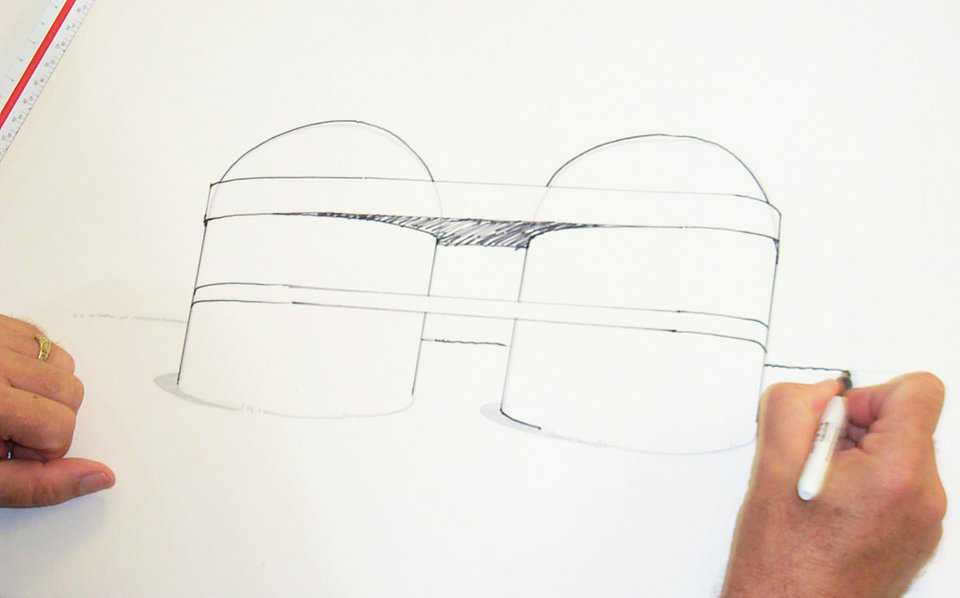
In the Beginning — Every home in its beginning stage is bare. Exterior elements provide interest and variety. Banding used to connect the two domes adds horizontal lines and gives the dome a lineal feel. (Rick Crandall)
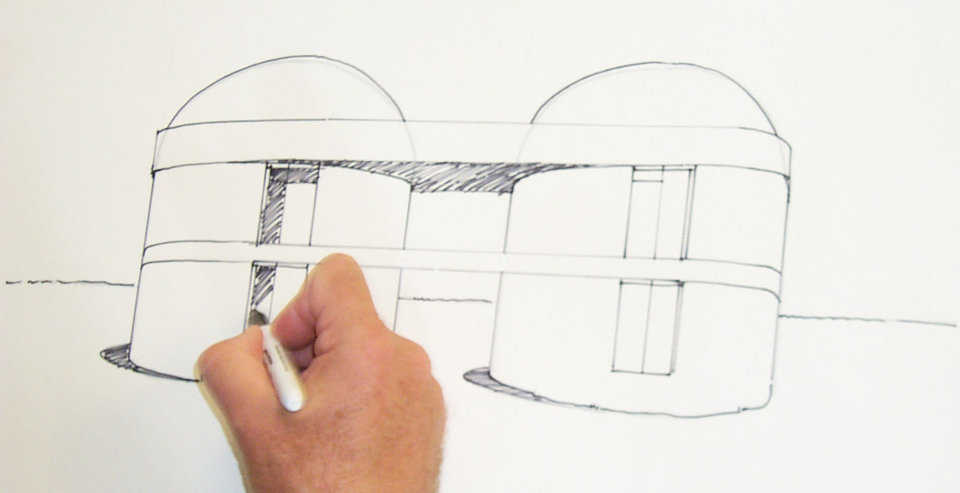
Shadow and Shape — The interplay of light and shade enhances the dome with depth. Door and window shapes provide shadow, detail and definition. (Rick Crandall)
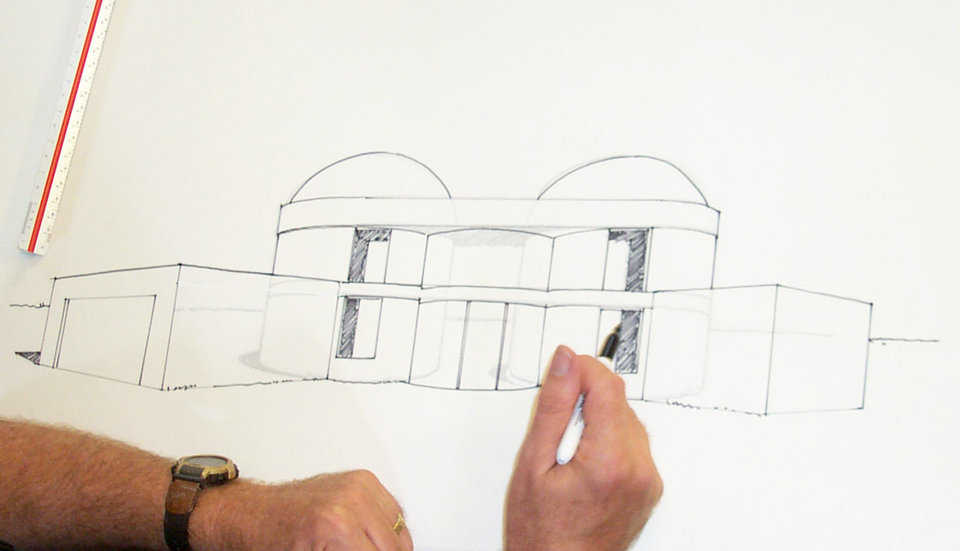
Step-Down Massing — Conventional structures, added to the dome, play a major role in step-down massing and create visual interest. (Rick Crandall)
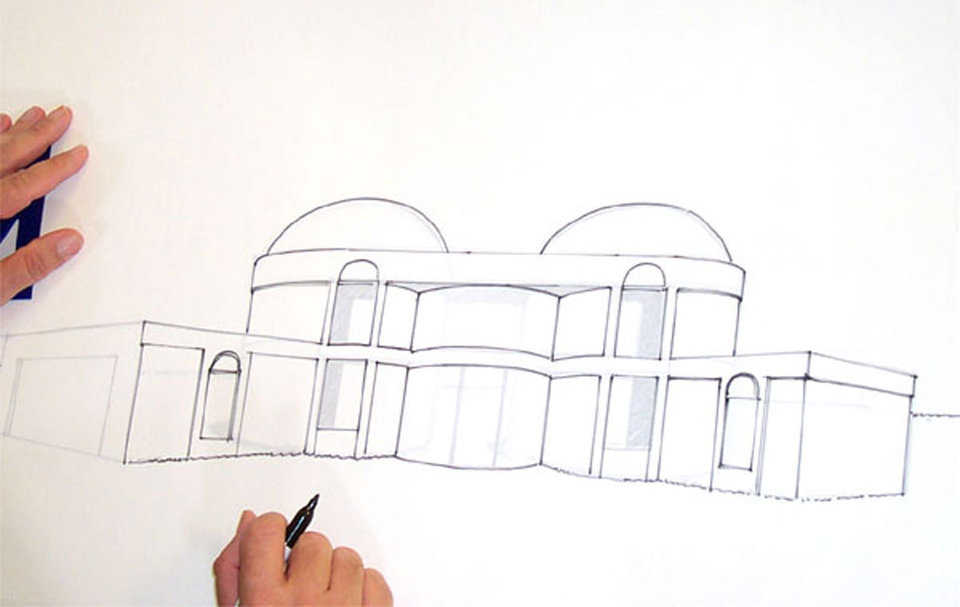
Color and Texture — Eye appeal can be created by incorporating some dark shadows and lighter areas with mediums of a third color. Domes can be coated and/or accented with various materials: concrete, stucco, brick, paint, etc. (Rick Crandall)
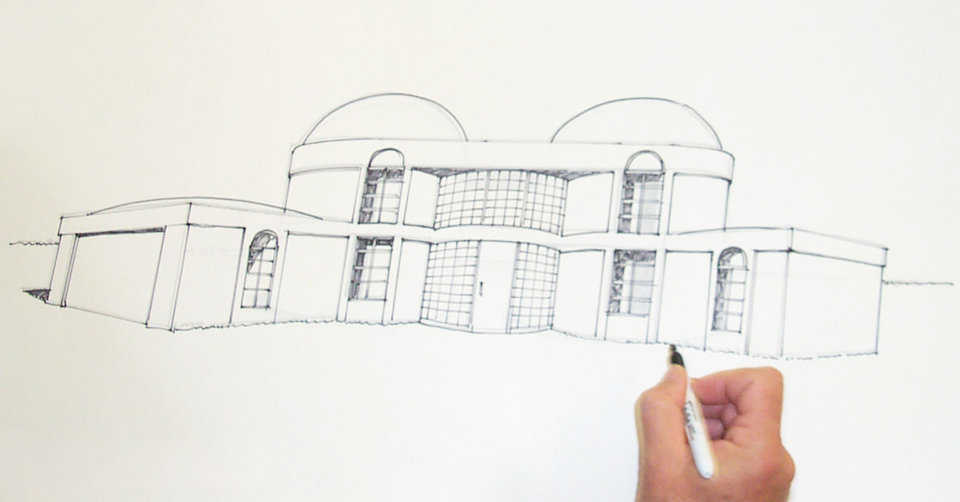
Contrast — A contrast in materials applied to the exterior lends texture. Here, glass brick in the entry way provides light and variation. (Rick Crandall)
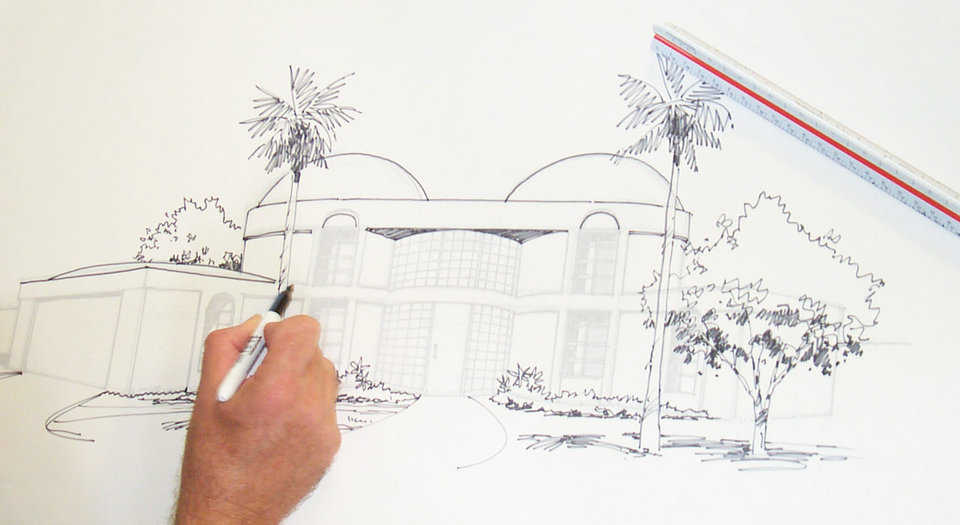
Landscaping — Landscaping softens the transition from building to earth and ties them together. Combining landscaping elements adds to the dome’s curb appeal. (Rick Crandall)